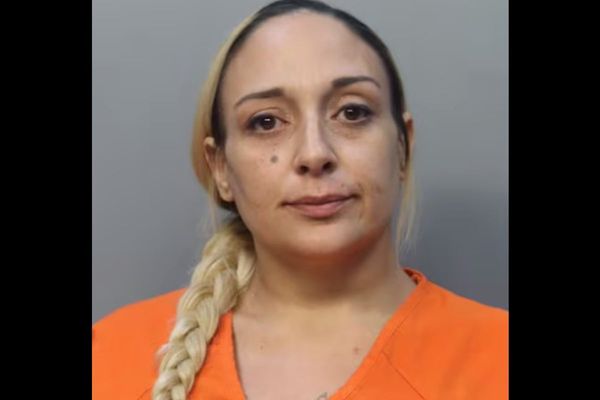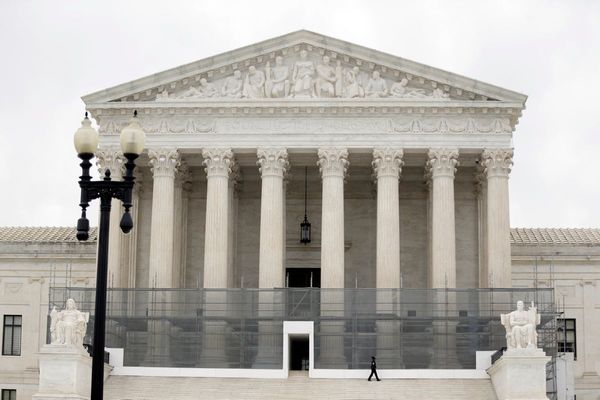CHICAGO — Graham Moore is 40, a relatively new husband (married in 2019), an even newer father (son born in 2021), an Academy Award winner (for his screenplay “The Imitation Game”) and a Chicago-raised resident of L.A.'s Silver Lake neighborhood. He’s half a novelist, half a screenwriter, though already the math has gone flooey: Moore’s movie life now includes a co-writer/director credit for his feature directorial debut, currently in theaters.
“The Outfit,” an eccentric and rewarding addition to Chicago underworld mythology, stars Oscar winner Mark Rylance as a British “cutter” of exquisite handmade suits. Mistaken frequently for a common tailor, this man, Leonard Burling, has relocated for shadowy reasons to Chicago, where his shop’s clientele includes mob kingpins and their associates.
Set in the 1950s, “The Outfit” unfolds over a single, twisty, bloody night of suspicion, surveillance, impromptu surgery and a plot best left to real-time discovery. The question guiding the writing, Moore told me in an interview recently, was simple for Moore and his collaborator, Johnathan McClain, the latter best known locally for his solo performance showcase “Like It Is.”
“The question,” Moore said, was this: “Could we tell a classic ‘50s gangster story not from the gangsters’ perspective, but from that of a mild-mannered suitmaker who’s in way over his head?”
A Chicago sneak preview screening was happening a few hours after we talked. Many of Moore’s hometown friends and family members were coming. “I have a large and motley extended family — my mother, my stepfather, my father, my stepmother, two sisters, two brothers, various husbands and wives. It’s a very complicated family structure. I have every kind of sibling you can have! And they’re all coming to see it tonight! And I’ve never been more anxious about a screening!”
We’ll get to how it went in a second.
Family ties, Moore explained, had a huge influence on the genesis of “The Outfit.” His grandfather — “a huge paternal figure in my young life” — was a longtime family practice doctor in West Orange, New Jersey, and “one of his patients was this notorious mobster Jerry Catena. My grandmother was shocked and sort of horrified by this. She’d say: ‘How can you let this murderer walk through the doors of your office?’ And my grandfather, such a sweet man — my image of what a mensch is came from him — he’d always say: ‘He’s never been anything but a gentleman to me.’”
That got Moore thinking: “What were their conversations like behind closed doors? Was my grandfather pretending not to know who he really was? Did he let his guard down?” That was one seed for Leonard in “The Outfit.”
Another seed: In 1957, the first surveillance bug in FBI history was planted behind a radiator in Celano’s Custom Tailors, located at 620 N. Michigan Ave. The Chicago mob used the shop as its downtown headquarters. “As a writer and filmmaker,” Moore said, “I’m enamored of drawing from real life.”
The paradox of “The Outfit” is in its frank embrace of a hermetic, soundstage-bound atmosphere, effective in ways unrelated to conventional realism. When the pandemic exploded in early 2020, the movie, like almost every movie about to go into production, stalled. Then the idea of confining filming to a single London warehouse soundstage emerged. This was convenient for Rylance and, among others, for the superb Simon Russell Beale as the mobster trying to rat out whoever’s been ratting out his organization’s activities to the feds.
“With any other film,” Moore said, “I’d be sitting across from you now telling you how we had to find real locations, real places, ‘you can’t fake what’s real.’ On this film, it’s the exact opposite. We had to build the exterior and the interiors, floor to ceiling, on a soundstage, so the space could be completely controlled. And that way, we could design the hell out of every inch of it.”
Working with cinematographer Dick Pope, a veteran of many Mike Leigh films as well as Neil Burger’s “The Illusionist,” Moore said he and his design collaborators “wanted the film to look like one of Leonard’s suits. It’s a film about a character with his own precise aesthetic, so the film should reflect his aesthetics.” Their research took them to London’s Savile Row, in particular Huntsman & Sons, a 300-year-old establishment. Rylance trained there for the role.
Moore grew up in Lincoln Park, spending “much of my childhood commuting along Lake Shore Drive” while he attended the University of Chicago Laboratory Schools. His mother, Susan Sher, served as former first lady Michelle Obama’s chief of staff and now works as senior adviser to University of Chicago President Paul Alivisatos. He graduated from Lab in 1999 before earning an undergraduate degree in religious studies at Columbia University.
Moore went on to make a huge impact at the 2015 Academy Awards ceremony with a succinctly moving acceptance speech in which he acknowledged his suicide attempt at age 16. “I felt weird, and I felt different, and I felt like I did not belong,” he said that evening. To those who feel like you don’t “fit in anywhere,” he said, “I promise you do.”
So much has happened to Moore since that night. Like every other Hollywood screenwriter, he has been hired for jobs that didn’t come to fruition, among them a screen version of Erik Larson’s serial killer sensation “The Devil in the White City,” which now, at last, is inching toward limited series adaptation, though without Moore involved.
Easy come, easy go. “A half-dozen of the best screenwriters in Hollywood, and also me, were invited to do drafts of that project. It was fun to work on. I got to work with Erik Larson, and he’s been a tremendous supporter and confidant ever since.”
When Moore was younger, he played in a lot of bands and later worked as a recording engineer and, briefly, a music producer. “Everything I know about collaborative artmaking came from working with musicians and playing music with other people,” he said.
On “The Outfit,” establishing a baseline of trust and ease with his leading actor yielded what Moore called “a master class taught by Mark Rylance.”
“He’s such a subtle craftsman,” Moore said of the chameleonic wizard who won a supporting actor Oscar for director Steven Spielberg’s “Bridge of Spies.” “One of his questions was always: ‘How transparent do you want my face in this scene? How much of my thoughts and feelings do you want me to reveal here? 80%? 20?’ He’d do different takes, and he’d be, like, ‘Let’s do a 40% take!’ And he could give you exactly that level of emotional transparency. Working with him was such a gift.”
Then he added: “And I hope my family likes it!”
The next morning, I called Moore to ask him how they liked it.
“Oh, gosh. Well. There’s nothing scarier than standing in the AMC River East, where I saw movies as a child, staring at all my family members. But they seemed to really like it. My mother had seen an earlier cut out in L.A., a few weeks into editing. Extremely rough cut. I kept trying to tell her, ‘it’s going to be much better soon.’ So when she said last night, ‘Oh! This is actually good!” it was her admission that she was worried it might not be.”
He laughed, and then said: “Moments like that are helpful so that they realize I do have a real job. And I do get to make movies.”
———







